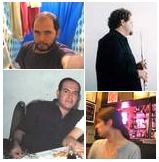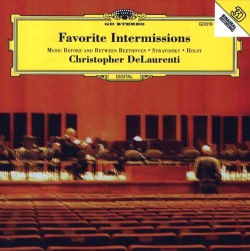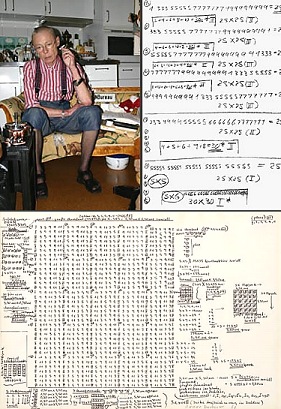Our regular listen to and look at living, breathing composers and performers that you may not know yet, but I know you should… And can, right here and now, since they’re nice enough to offer so much good listening online:
“New” Mexico via Myspace
 If your idea of contemporary Mexican art music is still Chavez and Revueltas, you’re so far out of date that it’s not even funny! I can’t catch you up on composers from the 50’s through the 90’s; Google will have to help you out there. Some names to explore might be Manuel Enríquez, Mario Lavista, Federico Ibarra-Groth, Marcela Rodríguez, Hilda Paredes, Hebert Vázquez, Germán Romero, Gabriela Ortíz Torres, Juan Felipe Waller, Julio Estrada, Mauricio Beltránand. (Feeling out of the loop already? Then get busy…)
If your idea of contemporary Mexican art music is still Chavez and Revueltas, you’re so far out of date that it’s not even funny! I can’t catch you up on composers from the 50’s through the 90’s; Google will have to help you out there. Some names to explore might be Manuel Enríquez, Mario Lavista, Federico Ibarra-Groth, Marcela Rodríguez, Hilda Paredes, Hebert Vázquez, Germán Romero, Gabriela Ortíz Torres, Juan Felipe Waller, Julio Estrada, Mauricio Beltránand. (Feeling out of the loop already? Then get busy…)
Those are all fine and respected composers, surely, but where I want to take you is to an even newer fringe of younger Mexican composers and performers, experimental and electronic musicians and improvisers, who happened to have set up a loose confederation on Myspace.com. We’re talking the NEW new, musicians whose influence lists always include Ferneyhough, Lachenmann and Murail right along with my generation’s heros like Xenakis, Ligeti and Feldman; where Zorn and Merzbow are placed as equals with any of those previous names; and where electronic and digital means are are taken for granted as stock-in-trade, right along with all the traditional instruments.
Many will have links on their Myspace page to more “official” websites; but the Myspace pages will give you an easy central location with plenty to listen to for starters, lots of information (Spanish helps but isn’t absolutely essential), and a good sense of the interconnection involved. I don’t need to tell you much more; this is Myspace after all, so you don’t need to just listen but can actually meet and talk with each and any of them! So what are you waiting for?.. say hello to our southern neighbors.
Iván Naranjo: Composer, his 2002 string quartet Uno, played by the Arditti, was just released on a new Mode CD.
Wilfrido Terrazas: Flautist and composer, seems to be a large part of the “glue” bringing these groups of musicians together.
Isaac de la Concha: Composer, improviser, teacher, with no less than three (!!) Myspace pages, one devoted to each aspect.
Alexander Bruck Santos: Violist with a fondness for everything from Feldman to free improv.
Adnán Márquez-Borbon: Saxophonist and improviser.
With a number of other musicians (who you’ll find listed in their personnel of the pages), this posse does duty in one or more of the following experimental ensembles:
Circling the periphery, but still connected and quite worth checking out, are these composers:
 Michael Rose, composer and pianist who’s normally found teaching at the Brooklyn Conservatory of Music, has been on a Fulbright-sponsored stay at the Kerala Kalamandalam, a performing-arts school in south India. The nice folks over at the music & audio review site
Michael Rose, composer and pianist who’s normally found teaching at the Brooklyn Conservatory of Music, has been on a Fulbright-sponsored stay at the Kerala Kalamandalam, a performing-arts school in south India. The nice folks over at the music & audio review site  Cecilia will tell you:
Cecilia will tell you: My pal
My pal  — Born in the Macau region of China, Bun-Ching Lam began studying piano at the age of seven and gave her first public solo recital at fifteen. In 1976, she received a B.A. in piano performance from the Chinese University of Hong Kong. She then accepted a scholarship from the University of California at San Diego, where she studied composition with Bernard Rands, Robert Erickson, Roger Reynolds, Pauline Oliveros. Afterwards she was invited to join the music faculty of the Cornish College of the Arts in Seattle, where she taught until 1986. She’s been the Jean MacDuff Vaux Composer-in-Residence at Mills College, California, the America Dance Festival, the New Jersey Symphony Orchestra; and a Visiting Professor in Composition at the School of Music, Yale University, and at Bennington College in Vermont. She now divides her time between Paris and New York.
— Born in the Macau region of China, Bun-Ching Lam began studying piano at the age of seven and gave her first public solo recital at fifteen. In 1976, she received a B.A. in piano performance from the Chinese University of Hong Kong. She then accepted a scholarship from the University of California at San Diego, where she studied composition with Bernard Rands, Robert Erickson, Roger Reynolds, Pauline Oliveros. Afterwards she was invited to join the music faculty of the Cornish College of the Arts in Seattle, where she taught until 1986. She’s been the Jean MacDuff Vaux Composer-in-Residence at Mills College, California, the America Dance Festival, the New Jersey Symphony Orchestra; and a Visiting Professor in Composition at the School of Music, Yale University, and at Bennington College in Vermont. She now divides her time between Paris and New York.

